December 18, 1929 – California Oil Boom in Venice –
The Ohio Oil Company completed a wildcat well in Venice, California, on the Marina Peninsula, east of the Grand Canal, two blocks from the ocean. The oilfield discovery well produced 3,000 barrels of oil a day from a depth of 6,200 feet. The Ohio Oil Company, which would become Marathon Oil of Ohio, had received a zoning variance permitting exploration within the city limits. Discovery of the Venice oilfield launched another California drilling boom similar to Signal Hill eight years earlier.
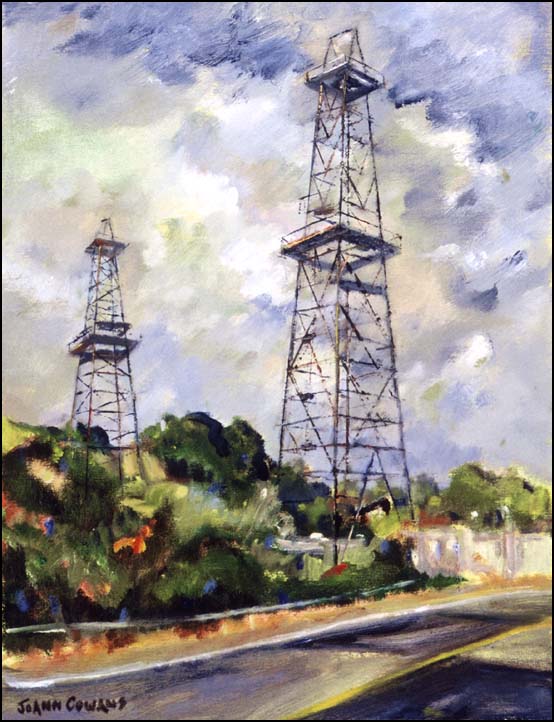
“Derricks by the Road” by California artist JoAnn Cowans (1933-2022), who in the early 1960s painted Venice and Brea oilfield derricks before they were dismantled.
December 18, 1934 – Hunt Oil Company founded in Texas
Hunt Oil Company, among the largest privately held U.S. petroleum companies, incorporated in Delaware and opened an office in Tyler, Texas. Four years earlier, Haroldson Lafayette “H.L.” Hunt had acquired the Daisy Bradford No. 3 well and other East Texas oilfield properties from C. Marion “Dad” Joiner.
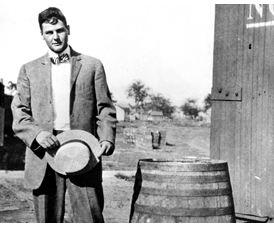
H.L. Hunt’s oil career began in Arkansas and East Texas and spanned much of the industry’s history, notes Hunt Oil Company. Photo circa 1911.
“H.L. Hunt bought the lease out ‘lock, stock and barrel,’ financing the deal with a first-of-its-kind agreement to make payments from future ‘down-the-hole’ production,” according to Hunt Energy. “The Bradford No. 3 turned out to be the discovery well of the great East Texas oilfield, which, at the time, was the greatest oilfield in the world.”
Hunt Oil moved its headquarters to Dallas in 1937 and drilled the first Alabama oil well in 1944. The company began offshore exploration in 1958 with leases in the Gulf of Mexico.
December 19, 1924 – Government debates Oil Conservation
Declaring “the supremacy of nations may be determined by the possession of available petroleum and its products,” President Calvin Coolidge appointed a Federal Oil Conservation Board to appraise oil policies and promote conservation of the strategic resource.
With Navy ships converting to oil from coal (see Petroleum and Sea Power), the resulting crude oil shortages in 1919 and 1920 gave credibility to predictions of domestic supplies running out within a decade, according to the U.S. Geological Survey (USGS). Debates about oil conservation continued during establishment of President Franklin Roosevelt’s National Industrial Recovery Act in 1933 — and its rejection as unconstitutional by the Supreme Court in 1935.
December 20, 1951 – Oil discovered in Washington State
A short-lived oil discovery in Washington foretold the state’s production future. The Hawksworth Gas and Oil Development Company Tom Hawksworth-State No. 4 well was completed near Ocean City in Grays Harbor County. It produced 35 barrels of oil a day.
The discovery well, which produced 300,000 cubic feet of natural gas from a depth of 3,700 feet, was abandoned as non-commercial. Sunshine Mining Company in 1967 deepened the Hawksworth well to more than 4,500 feet, but with only minor shows of oil, the well was shut in again.

Washington’s 1951 lone oil well yielded a total of 12,500 barrels of oil.
Of the 600 exploratory wells drilled in 24 Washington counties by 2010, only one produced commercial quantities of oil — a 1959 well completed by Sunshine Mining 600 yards north of the failed Hawksworth site. That well, Washington’s only commercial producer, was closed in 1961.
“The geology is too broken up and it does not have the kind of sedimentary basins they have off the coast of California,” explained a Washington Natural Resources geologist in 1997 (also see California Oil Seeps).
December 21, 1842 – Birth of an Oil Town “Bird’s-Eye View” Artist
Panoramic map artist Thaddeus Mortimer Fowler was born in Lowell, Massachusetts. Following the fortunes of America’s early petroleum industry, he would produce hundreds of unique maps of the earliest oilfield towns of Pennsylvania, West Virginia, Oklahoma and Texas.
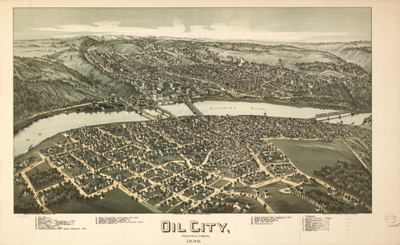
Oil City, Pennsylvania, prospered soon after America’s first commercial oil discovery in 1859 at nearby Titusville. T.M. Fowler 1896 map courtesy Library of Congress.
Fowler was one of the most prolific of the bird’s-eye view artists who crisscrossed the country during the latter three decades of the 19th century and early 20th century, according to the Amon Carter Museum of American Art, Fort Worth, Texas. Seemingly drawn from great heights, the views were made with skillful cartographic techniques.
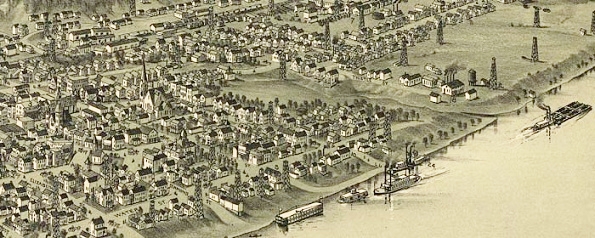
More than 400 Thaddeus Fowler panoramas have been identified by the Library of Congress, including this detail of the booming oil town of Sistersville, West Virginia, published in 1896.
Fowler featured many of Pennsylvania’s earliest oilfield towns, including Titusville and Oil City – along with the booming community of Sistersville in the new state of West Virginia. He traveled through Oklahoma and Texas in 1890 and 1891 similarly documenting such cities as Bartlesville, Tulsa and Wichita Falls.
Learn more in Oil Town “Aero Views.”
December 21, 1909 – Arctic Explorer turned Oil Promoter
One year after making widely accepted claims to have reached the North Pole, a special commission at the University of Copenhagen ruled explorer Dr. Frederick Cook had no evidence he reached the pole during his arduous journey. Cook already had become a celebrity when Admiral Robert E. Peary achieved the milestone in April 1909.
Despite the commission’s ruling, Cook used his fame to promote fraudulent oil exploration ventures in Texas, Wyoming, Arkansas, and other states. In 1923. he was convicted of mail fraud and served prison time in Leavenworth, Kansas, until pardoned by President Franklin D. Roosevelt in 1940.
Learn more in Arctic Explorer turned Oil Promoter.
December 22, 1875 – Grant seeks Asphalt for Pennsylvania Avenue
President Ulysses S. Grant convinced Congress to repave Pennsylvania Avenue’s badly deteriorated plank boards with asphalt. Grant delivered to Congress a “Report of the Commissioners Created by the Act Authorizing the Repavement of Pennsylvania Avenue.”

President Grant first directed that Pennsylvania Avenue be paved with Trinidad bitumen in 1876. In 1907, asphalt distilled from petroleum repaved the pathway to the Capitol, above.
The project would cover 54,000 square yards. “Brooms, lutes, squeegees and tampers were used in what was a highly labor-intensive process.” With work completed in the spring of 1877, the asphalt – obtained from a naturally occurring bitumen lake found on the island of Trinidad – would last more than 10 years.
In 1907, the road to the Capitol was repaved again with a superior asphalt made with petroleum from U.S. oilfields. By 2005, the Federal Highway Administration reported that more than 2.6 million miles of America’s roads were paved.
Learn more in Asphalt Paves the Way.
December 22, 1903 – Carl Baker patents Cable-Tool Bit
Reuben Carlton “Carl” Baker of Coalinga, California, patented an innovative cable-tool drill bit in 1903 after founding the Coalinga Oil Company.
“While drilling around Coalinga, Baker encountered hard rock layers that made it difficult to get casing down a freshly drilled hole,” noted a Baker-Hughes historian in 2007. “To solve the problem, he developed an offset bit for cable-tool drilling that enabled him to drill a hole larger than the casing.”
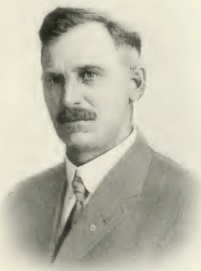
Baker Tools Company founder R.C. “Carl” Baker in 1919.
Coalinga would become a petroleum boom town thanks to Baker’s leadership, according to the town’s museum. He helped establish several oil companies, a bank, and the local power company. After drilling wells in the Kern River oilfield, he added another technological innovation in 1907 by patenting the Baker Casing Shoe, a device ensuring uninterrupted flow of oil through the well.
By 1913 Baker organized the Baker Casing Shoe Company (renamed Baker Tools two years later). He opened his first manufacturing plant in Coalinga in a building that today houses the R.C. Baker Museum. Baker never advanced beyond the third grade, but “he possessed an incredible understanding of mechanical and hydraulic systems.”
Learn more in Carl Baker and Howard Hughes.
December 22, 1975 – Strategic Petroleum Reserve established
President Gerald R. Ford established the U.S. Strategic Petroleum Reserve by signing the Energy Policy and Conservation Act of 1975. With a capacity of 713.5 million barrels of oil in 2018, the Strategic Petroleum Reserve was the largest stockpile of government-owned emergency oil in the world. SPR storage sites include five salt domes on the Gulf Coast.
In addition to SPR, the Energy Department has maintained a northeast home heating oil reserve of one million barrels for homes and businesses and a one million barrel supply of gasoline.
December 23, 1943 – Oilfield found in Mississippi
Gulf Oil Company discovered a new Mississippi oilfield at Heidelberg in Jasper County. The company’s surveyors had recognized the geological potential of the area southeast of Jackson as early as 1929, and Gulf Oil used newly developed seismography methods and core drilling technologies to look for oil-bearing formations. The 1943 discovery well revealed one of the state’s largest oilfields since the first Mississippi oil well of 1939.
December 24, 1997 – Top Holiday Film includes Novelty Oil Product
The TNT network began airing “24 Hours of A Christmas Story,” an annual marathon of the small independent film made in 1983. The circa 1940 movie’s popularity — and merchandise sales — led to more marathons on TBS. In addition to the plastic leg-lamp with black nylon polymer stocking, another petroleum product is featured — a waxy novelty candy.

Set in 1940, “A Christmas Story” featured Ralphie, his 4th-grade classmates – and an unusual petroleum product. Photos courtesy MGM Home Entertainment.
Paraffin makes its appearance when Ralphie Parker and his fourth-grade classmates smuggle Wax Fangs into class. An older generation may recall the peculiar disintegrating flavor of Wax Lips, Wax Moustaches, and Wax Bottles. Few realize the candy started in the U.S. oil patch — as did another oilfield paraffin product, Crayola Crayons.
Learn more in the Oleaginous History of Wax Lips.
_______________________
Recommended Reading: Black Gold, the Artwork of JoAnn Cowans (2009); The Three Families of H. L. Hunt: The True Story of the Three Wives, Fifteen Children, Countless Millions, and Troubled Legacy of the Richest Man in America
(1989) Bird’s Eye Views: Historic Lithographs of North American Cities
(1998); Down the Asphalt Path: The Automobile and the American City
(1994); History Of Oil Well Drilling
(2007); How Sweet It Is (and Was): The History of Candy (2003); Nellie Bly: Daredevil, Reporter, Feminist
(1994). Your Amazon purchase benefits the American Oil & Gas Historical Society. As an Amazon Associate, AOGHS earns a commission from qualifying purchases.
_______________________
The American Oil & Gas Historical Society (AOGHS) preserves U.S. petroleum history. Become an AOGHS annual supporting member and help maintain this energy education website and expand historical research. For more information, contact bawells@aoghs.org. Copyright © 2023 Bruce A. Wells. All rights reserved.


